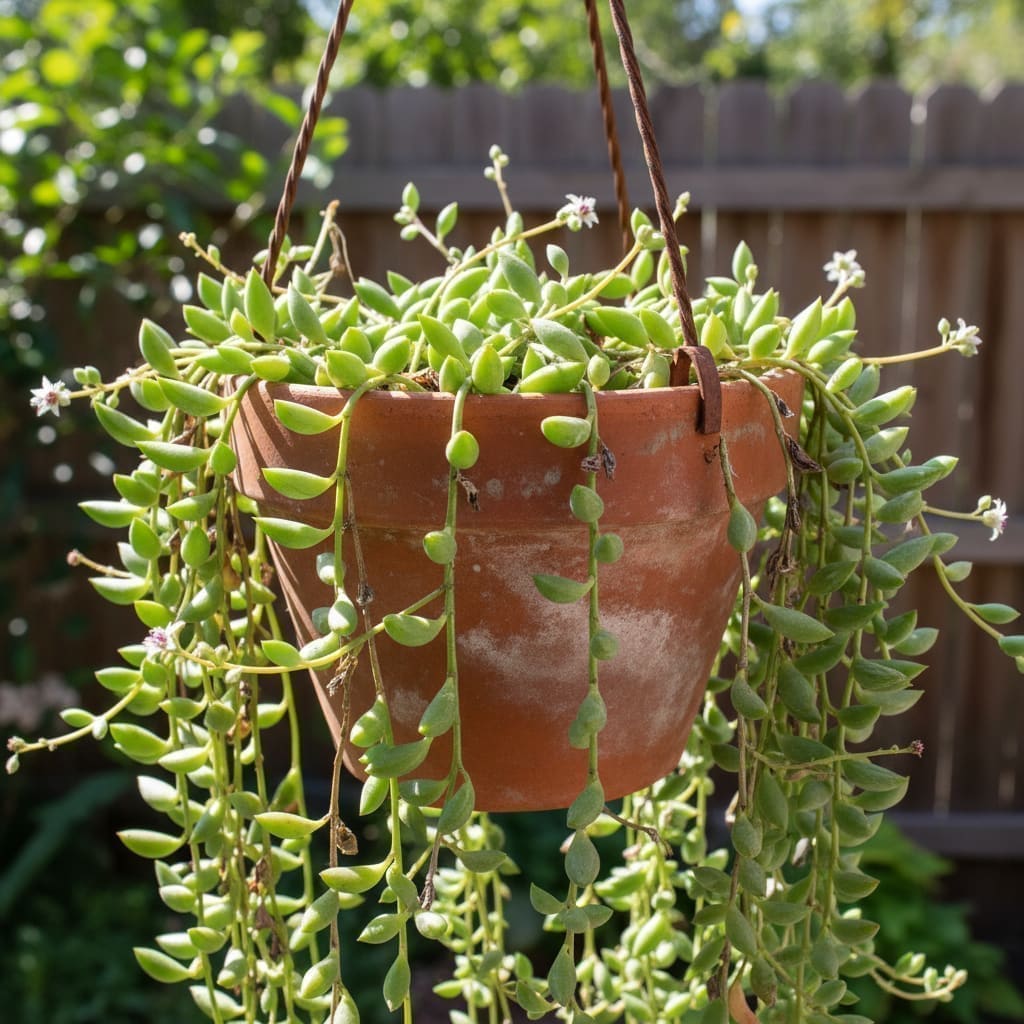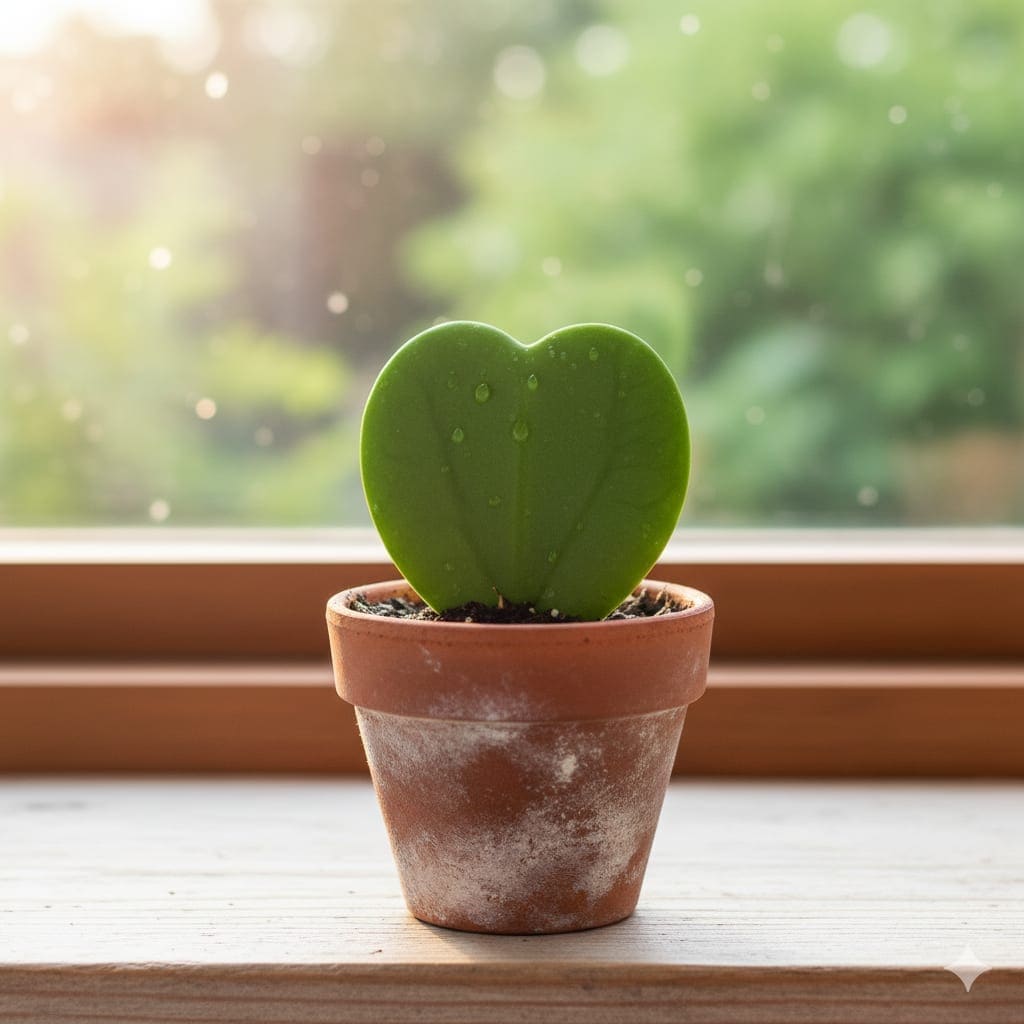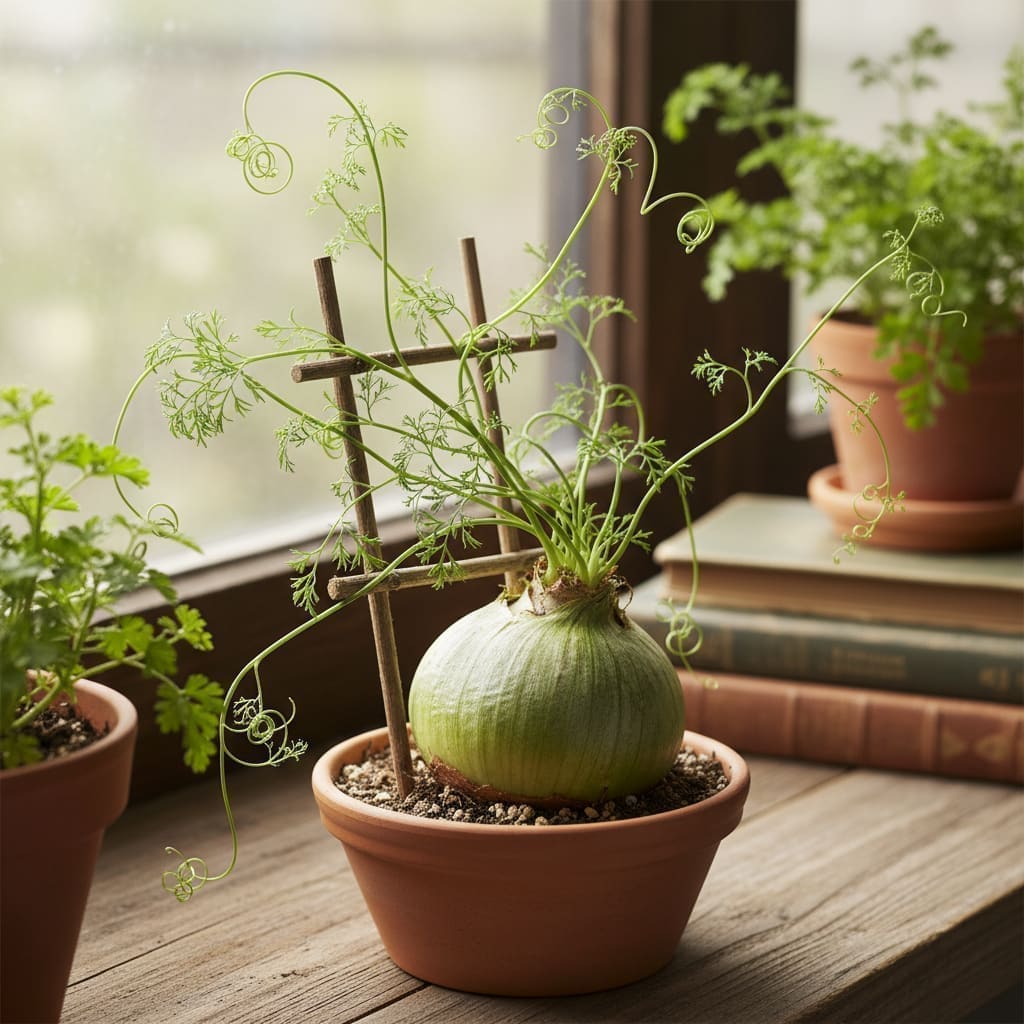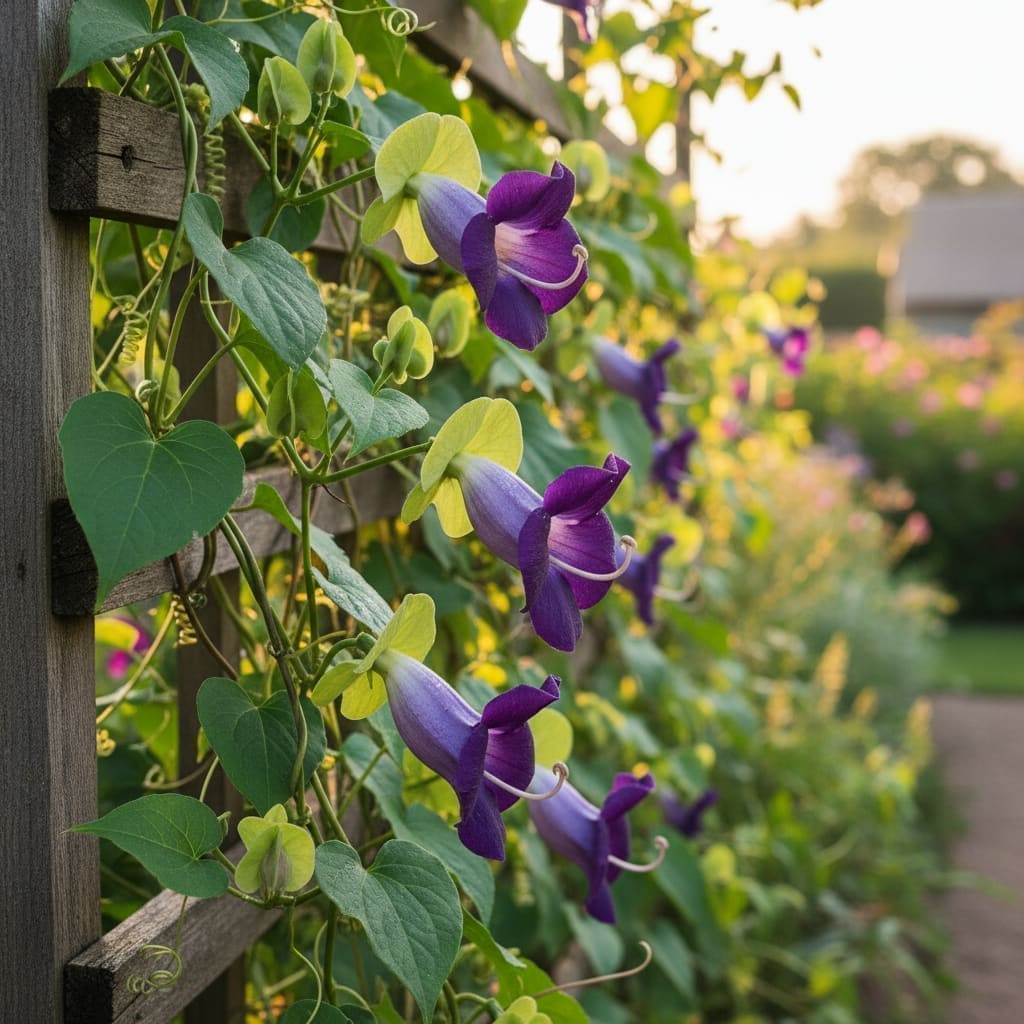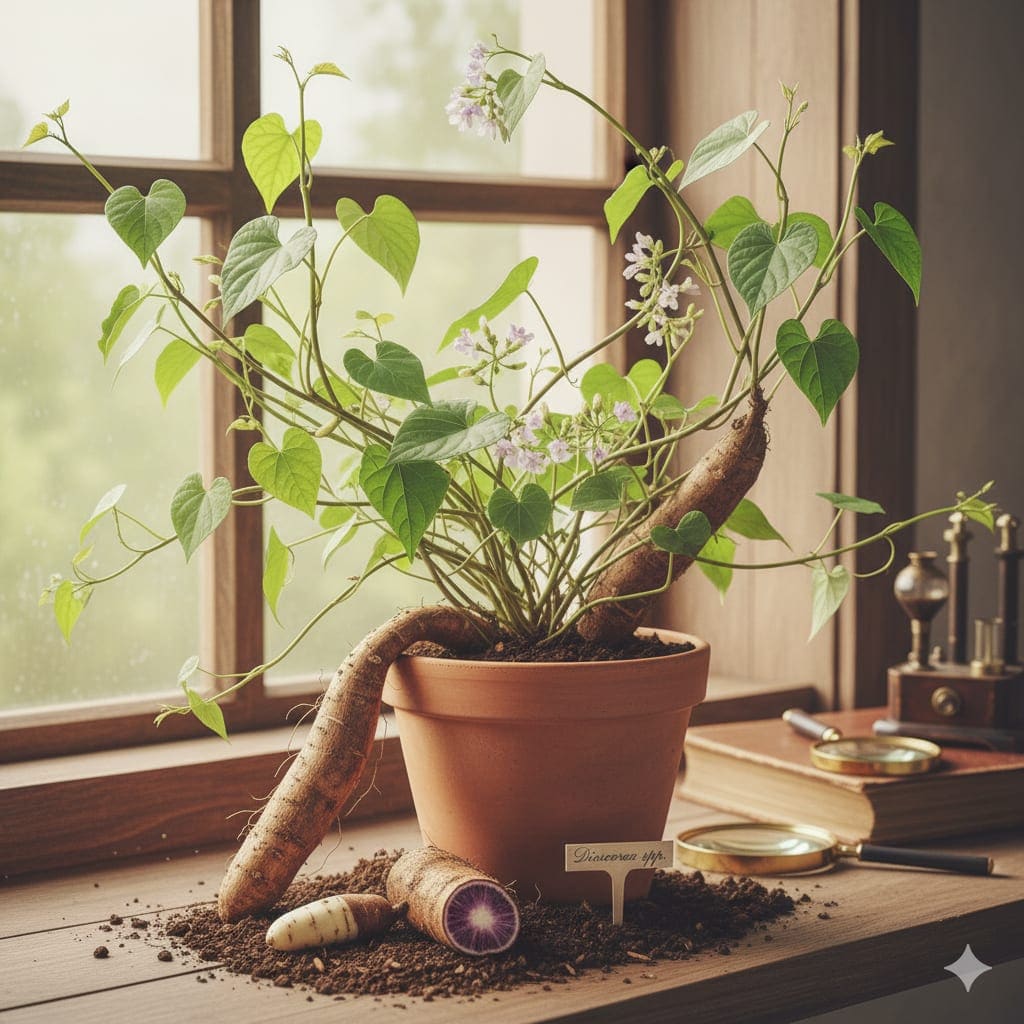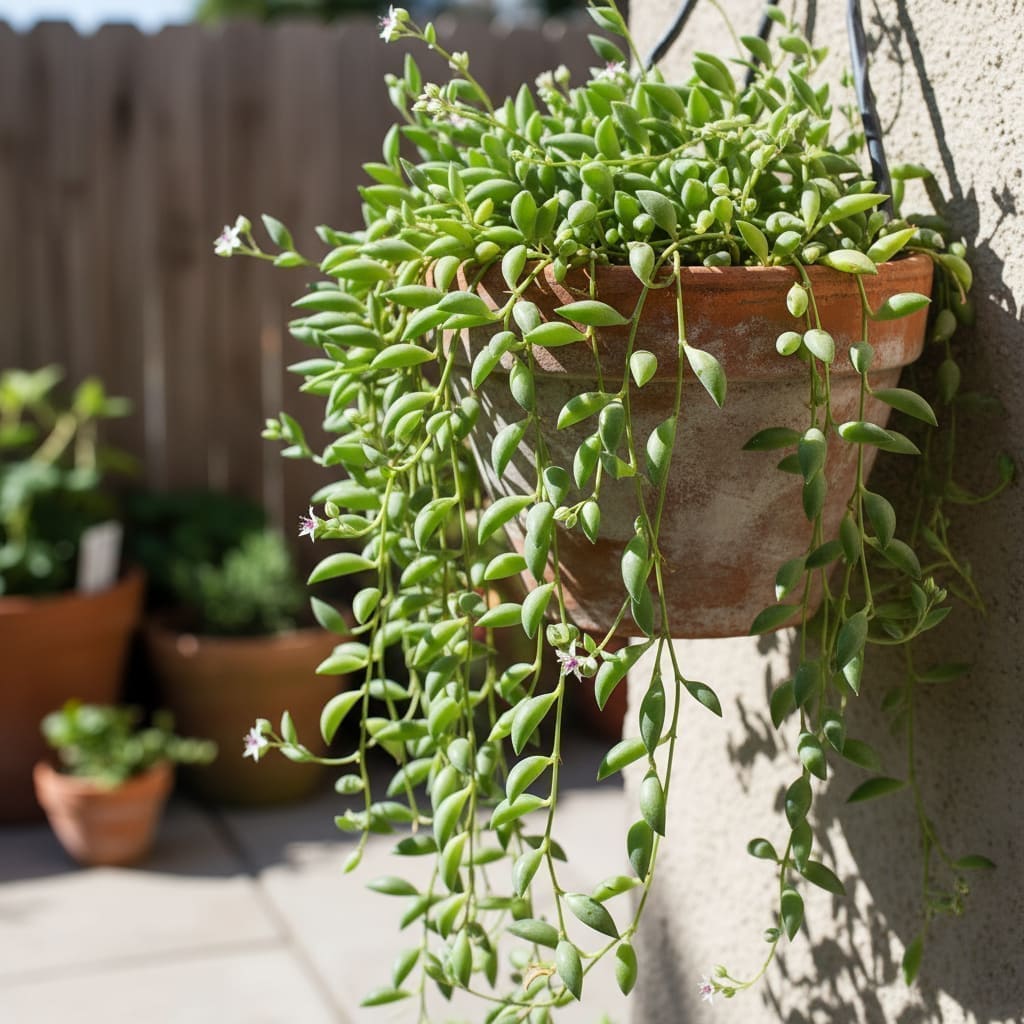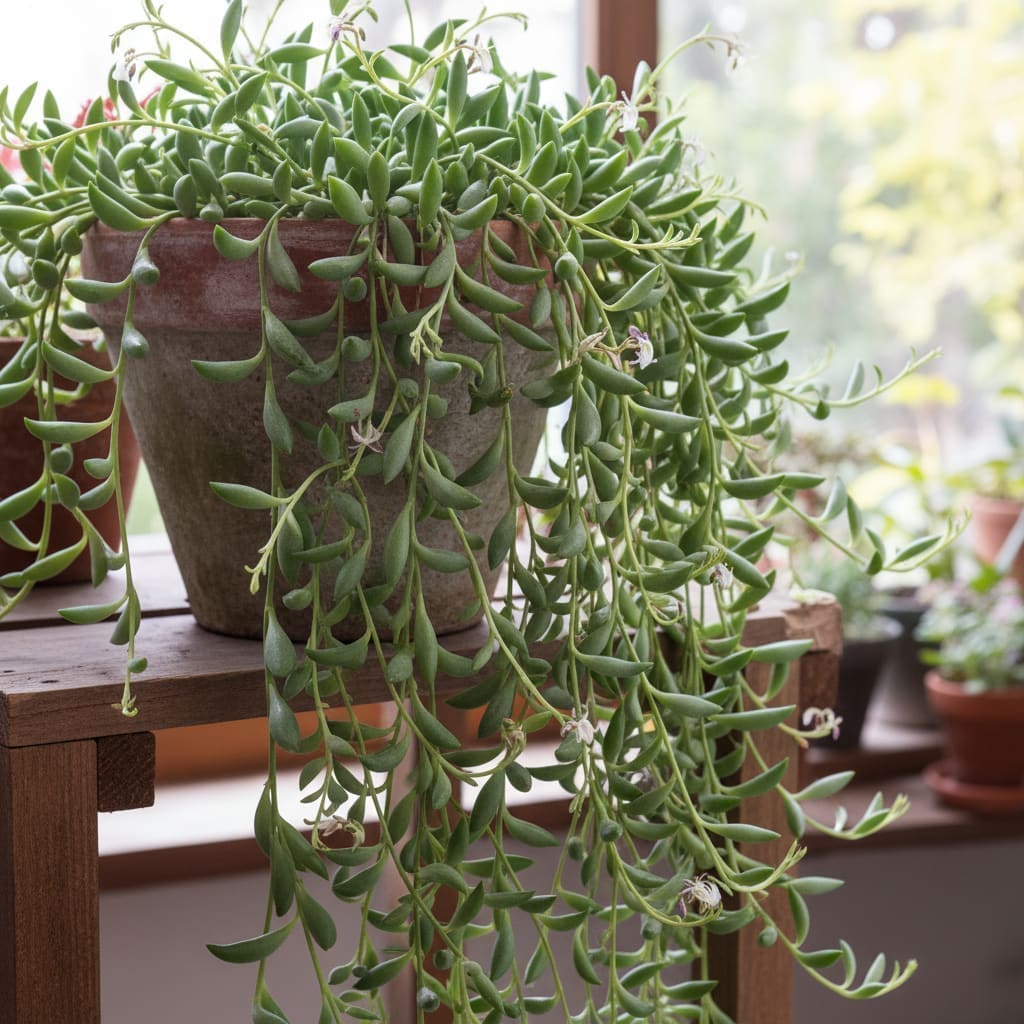Curio radicans (String of Bananas) Care & Growing Guide
Overview
Curio radicans, commonly known as the String of Bananas, is a trailing succulent native to Southern Africa. Recognized for its cascading stems adorned with banana-shaped leaves, this plant is a favorite among succulent collectors and indoor gardeners seeking a low-maintenance yet visually striking specimen. In its native habitat, it thrives in sunny, arid environments, making it well-suited to bright indoor spaces and drought-tolerant gardens.
Besides its ornamental appeal, the String of Bananas produces small, white to pale yellow flowers with a subtle, sweet fragrance that can attract pollinators in outdoor settings.
Identification & Growth Habit
Curio radicans is a fast-growing, trailing or climbing succulent. Its stems can extend several feet, making it ideal for hanging baskets, tall planters, or trained along supports. The leaves are small, curved, and shaped like miniature bananas, with translucent "windows" along their sides that help with photosynthesis in bright light.
In optimal conditions, the plant produces slender stems that root readily at nodes, allowing it to spread quickly. While primarily grown for its foliage, its blooms appear in late winter to early spring under the right conditions.
Light & Placement
This species requires bright, direct sunlight for at least six hours daily. A south-facing window is ideal indoors. In lower-light homes, supplement with full-spectrum grow lights to maintain healthy growth and prevent leggy stems.
- Indoors: Place near the brightest window available, ideally with direct morning or afternoon sun.
- Outdoors: Position in a sunny, sheltered spot. Gradually acclimate to full sun to avoid leaf scorch.
Watering & Humidity
As a succulent, Curio radicans stores water in its leaves and requires infrequent watering. Allow the soil to dry out completely between waterings. When watering, soak the soil thoroughly and let excess water drain away.
- Check soil moisture with a meter or by touch before watering.
- Reduce watering frequency in fall and winter when growth slows.
Average household humidity is sufficient. Avoid placing near humidifiers or extremely dry vents, though the plant tolerates a range of humidity levels.
Soil & Repotting
Use a well-draining, sandy succulent or cactus mix. A pot with drainage holes is essential to prevent root rot.
- For custom mixes, combine potting soil with coarse sand and perlite.
- Repot every 2–3 years or when the plant outgrows its container.
Fertilizing
Feed lightly during the active growing season (spring and summer) with a diluted organic fertilizer such as liquid kelp or fish emulsion. Apply every 4–6 weeks. Avoid fertilizing in fall and winter to prevent weak, leggy growth.
Pruning & Training
Prune to control length, encourage branching, and remove damaged stems. Use clean, sharp scissors or pruners.
- For fullness: Trim long stems to promote side shoots.
- Training: Guide stems along a trellis, moss pole, or wire frame for vertical interest.
Propagation
String of Bananas is easy to propagate from stem cuttings.
Step-by-Step Propagation
- Select a healthy stem and cut a 4–6 inch section just below a leaf node.
- Remove leaves from the bottom 1–2 inches of the cutting.
- Allow the cutting to callous over for 1–2 days in a dry, shaded spot.
- Plant the calloused end in moist, well-draining succulent soil.
- Place in bright, indirect light and keep soil lightly moist until roots form (usually within 2–3 weeks).
- Once established, transition to normal watering practices.
Common Problems
Pests
- Mealybugs: Appear as white, cottony masses. Remove with a cotton swab dipped in rubbing alcohol.
- Aphids: Small green or black insects on new growth. Treat with insecticidal soap or neem oil.
Diseases
- Root rot: Caused by overwatering or poor drainage. Remove affected roots, repot in fresh soil, and adjust watering.
Physiological Issues
- Leggy growth: Often due to insufficient light. Move to a brighter location.
- Wrinkled leaves: Indicate underwatering or root issues.
Toxicity & Pet Safety
Curio radicans is toxic if ingested by humans or pets. Keep out of reach of cats, dogs, and small children. Symptoms in pets may include gastrointestinal upset; consult a veterinarian if ingestion occurs.
Styling & Decor Tips
- Hang in macramé planters for cascading foliage displays.
- Use tall pedestal pots to showcase trailing stems.
- Combine with other drought-tolerant plants in mixed succulent arrangements.
Varieties & Cultivars
While Curio radicans itself is the primary cultivated form, it is sometimes confused with related species such as Curio rowleyanus (String of Pearls) and Curio herreanus (String of Watermelons). All share similar care requirements but differ in leaf shape.
Buying Tips & Maturity
When purchasing, look for plants with firm, plump leaves and no signs of pests. Avoid specimens with mushy stems or extensive leaf drop. Mature plants can trail several feet and may bloom under favorable conditions.
Seasonal Care
- Spring/Summer: Active growth; water and fertilize regularly, provide maximum light.
- Fall/Winter: Growth slows; reduce watering, stop fertilizing, and maintain bright light.
- Protect from frost; bring indoors if temperatures approach 32°F (0°C).
FAQ
- How fast does String of Bananas grow? In ideal light and temperature, it can grow several inches per month during the active season.
- Can String of Bananas grow indoors year-round? Yes, provided it receives sufficient bright light, either from a sunny window or grow lights.
- Why are my String of Bananas leaves shriveling? This may indicate underwatering or root damage from overwatering. Check soil moisture and root health.
- Will it flower indoors? It can, though flowering is more common outdoors or under very bright indoor conditions during late winter or early spring.
- Is it the same as String of Pearls? No, though related, String of Bananas has elongated, banana-shaped leaves, while String of Pearls has spherical leaves.
Troubleshooting Scenarios
- Sudden leaf drop: May result from abrupt temperature changes or shock after relocation. Move the plant gradually between environments to acclimate.
- Yellowing leaves: Often linked to excess moisture or nutrient imbalance. Check drainage and reduce feeding until new growth appears healthy.
- Stems drying from the tips: Could indicate prolonged underwatering or root restriction. Inspect roots and repot if bound.
Advanced Pruning & Training Techniques
For creative displays, use selective pruning to shape the plant into living wreaths or cascading spirals. Pinch back new growth tips to encourage dense branching, and weave pliable stems through wire frames while they are young and flexible. Regularly rotate hanging baskets to ensure even light exposure and symmetrical growth.
Companion Plant Ideas
Pair String of Bananas with other low-water, sun-loving species for cohesive arrangements:
- Echeveria varieties for rosette contrast.
- Crassula ovata (Jade Plant) for upright structure.
- Haworthia species for textural diversity in mixed planters.
Seasonal Care Calendar
| Season | Tasks |
|---|---|
| Early Spring | Resume fertilizing; prune leggy stems; repot if needed. |
| Mid-Summer | Monitor for pests; provide extra airflow in hot climates. |
| Autumn | Reduce watering; move containers indoors before frost. |
| Winter | Maximize light exposure; avoid cold drafts. |
Do & Don't List
- Do: Use sharp, sterilized tools for pruning to prevent disease spread.
- Do: Allow soil to dry completely between waterings.
- Don't: Leave the plant sitting in water-filled saucers.
- Don't: Place in prolonged low-light conditions without supplemental lighting.
